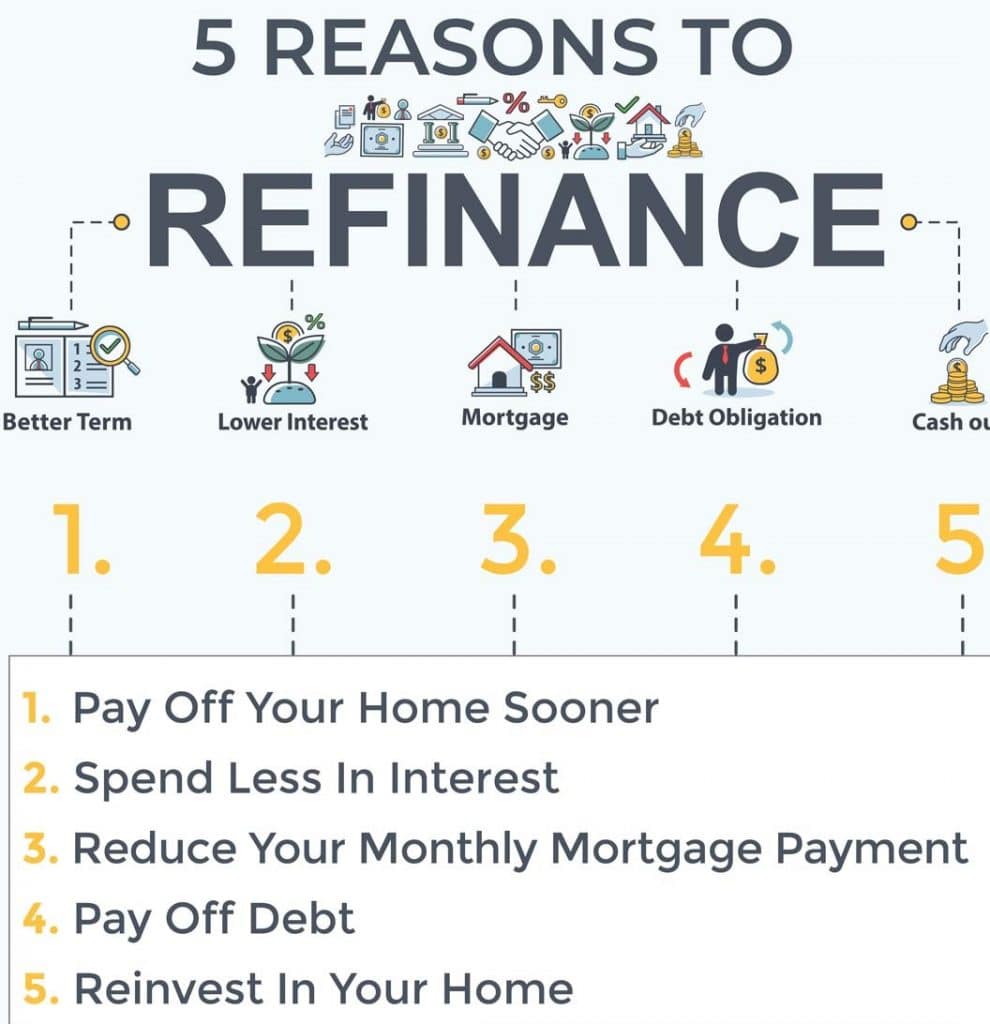 Refinancing your mortgage is an option if you are looking to save money or increase cash flow. You might want to lower the interest rate on your mortgage to reduce your monthly payments, or you might want to refinance your home to pull out equity for liquid cash.
Refinancing your mortgage is an option if you are looking to save money or increase cash flow. You might want to lower the interest rate on your mortgage to reduce your monthly payments, or you might want to refinance your home to pull out equity for liquid cash.
Refinancing is applying for a new mortgage to pay off the old mortgage. There are many factors to consider when deciding if refinancing is right for you.
Here’s how to understand if you should refinance and how to do it.
See If You’re Eligible To Refinance Your Mortgage
Types of Refinancing
The different types of refinancing options fall under two categories—increasing liquid cash or lowering monthly payments.
Refinancing to Get Cash
Need some extra cash for renovations or for an unexpected purchase?
- You can apply for refinancing to pull equity out of your home in cash. This is often the best option if you are looking to renovate your home.
Refinancing to Lower Mortgage Payments
You can apply for refinancing to:
- Shorten the length of your loan so you pay less interest
- Reduce the interest rate on your mortgage either because interest rates have dropped or because your credit score and income have improved since your original mortgage.
- Move your loan from a variable-rate mortgage to a fixed-rate mortgage to lock in a lower interest rate without worrying about your interest rates increasing.
- Remove the need for mortgage insurance once you’ve built up enough equity in your home. Once you own more than 20% of the value of your home, you no longer need to pay Private Mortgage Insurance.
Benefits of Refinancing
Refinancing usually saves money you would normally spend on your mortgage to save, invest, or spend elsewhere.
Increase Cash Flow
Pulling equity out of your home can give you access to cash you otherwise would not have. You can use this cash to repair your home, make a major purchase like another property or vehicle, pay for education, etc. If you use the cash to repair your home, you can deduct the interest from your taxes.
Refinancing your home and pulling out equity can create new opportunities for homeowners to make investments or improve their lives.
More Money Every Month
Refinancing your home to get a lower interest rate can free up a portion of your monthly income that normally goes toward paying interest on your mortgage. Let’s say you can lower your interest rate by 0.5%. Whatever the difference between your original monthly payment and your new one, there is now extra money you can spend or save.
Pay Off Your Home Loan Sooner
Refinancing your home can also shorten the length of your loan, allowing you to pay down your debt and build up equity faster. There are many reasons you might want to pay off your home sooner. Perhaps you want to purchase a rental property or reduce your overall debt.
What to Look Out For
Refinancing your home is creating a new home loan. You are technically paying off the old loan with the new home loan. There are costs associated with applying, and there can be extra fees depending on how you pay down your loan.
Things to Consider
- Make sure the amount of money you save by refinancing is more than the fees and potential penalties.
- Shop around for different interest rates to find the most competitive option.
- You might find your original lender is the easiest and most cost-effective option. It often is. However, keep your options open for something more competitive.
- Considering hiring a professional or a lawyer to help you understand your new loan
- Make sure interest rates are lower if you do refinance
- Work on improving your credit score and other factors the bank might consider, like income and debt, to get a more competitive interest rate
While the market is not something you can control, your credit score is. The better your credit score, the lower your interest rate will be. Having a high credit score also gives you more options. It will be easier to get approved with different lenders and for different types of refinancing if you have a good or excellent credit score.
7 Steps to Refinance Your Mortgage
Before you apply for refinancing, make sure you plan what you will do with the extra cash and how you will pay off the loan. Assuming you’ve weighed the benefits and the potential risks, here’s how to refinance your home mortgage.
- Define your financial goal. Are you looking for extra cash, lower monthly payments, etc?
- Choose which type of refinancing will help you achieve that goal most cost-effectively.
- Time the market for the most competitive rates.
- Research different lenders and resources to help. You don’t have to stick with your original lender. Be sure to shop around for the best lender and reach out for professional help if you need it.
- Be prepared for the process to be long and require work on your part. You must prepare similar documentation as you did when securing your original mortgage.
- Know when to walk away. You might find that no options make financial sense even though you are ready to refinance. It all depends on the interest rates and loan options offered by your current lender or a new one. You might need to walk away if you can’t find a deal that gives you access to more liquid cash or lower monthly payments or interest.
- If you find an option that makes sense for your financial goals, apply for your new mortgage with your lender.
Once you’ve assessed your financial goals and the potential risk, you can decide if refinancing is right for you. Timing is key, so make sure you are working on increasing your credit score, lowering your debt, and increasing your income as you time the market. When done correctly, refinancing your mortgage can be a powerful tool to save tens of thousands of dollars.






